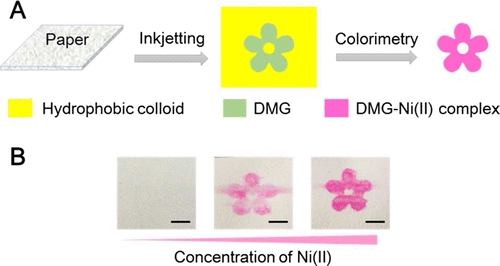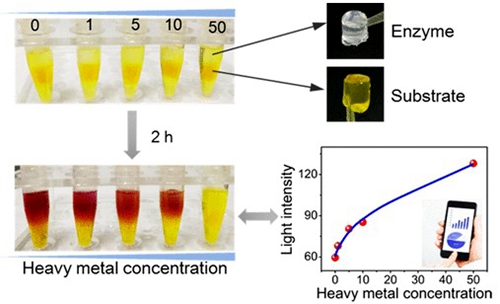Progress in visual detection and toxicity assessment of heavy metal ions
September 29, 2018 Source: Institute of Physics and Chemistry, Chinese Academy of Sciences
Window._bd_share_config={ "common":{ "bdSnsKey":{ },"bdText":"","bdMini":"2","bdMiniList":false,"bdPic":"","bdStyle":" 0","bdSize":"16"},"share":{ }};with(document)0[(getElementsByTagName('head')[0]||body).appendChild(createElement('script')) .src='http://bdimg.share.baidu.com/static/api/js/share.js?v=89860593.js?cdnversion='+~(-new Date()/36e5)];Heavy metals can interact strongly with proteins, enzymes, etc. in the human body, making them inactive or accumulating in certain organs of the body, causing chronic poisoning. Therefore, the detection and toxicity assessment of heavy metals is of great significance. Traditional heavy metal ion detection methods rely on large instruments, which are cumbersome and time consuming, and are not suitable for on-site inspection.
Recently, the Micro-Nano Materials and Technology Research Center of the Institute of Physics and Chemistry of the Chinese Academy of Sciences designed a super-wetting heavy metal ion detection paper chip. Firstly, the high-precision super-wetting pattern was produced by the inkjet printing method, and then the heavy metal ion analysis paper chip was fabricated by inkjet printing the probe molecules in the super-wetting pattern. In the actual detection process, the paper chip only needs to be placed in the water sample to be tested, and the visual analysis of heavy metal ions in the water sample can be realized according to the color change.
In addition, the researchers also designed a method for assessing the toxicity of heavy metal ions using biological enzymes. Since heavy metal ions have a significant inhibitory effect on the biological enzyme, the total toxicity evaluation of heavy metal ions in the water sample is achieved by enzymatic color reaction. Encapsulation of biological enzymes by hydrogel not only improves the storage aging of biological enzymes, but also further simplifies the actual detection steps.
These efforts laid the foundation for the development of portable heavy metal ion detection kits. Related research results are published in ACS Applied Materials & Interfaces (2018, 10, 11343–11349; 2018, 10, 26705–26712). He Junhui, a researcher at the Institute of Physical and Chemical Research, is the author of the paper. Assistant researcher Zhang Yue is the first author of the paper. Relevant research work has received strong support from the National Key Research and Development Program (2017YFA0207102) and the National Natural Science Foundation of China (21571182).

Fabrication of ultra-wetting paper chips and their visual detection of heavy metal ions

Visual assessment of total toxicity of heavy metal ions
he fluorine-containing phenol series product is toxic and irritating, it should be avoided absorbed into the body through the skin. And not allow to store with strong oxidant, alkali, hydrochloric acid and acid anhydride , Store with flammable liquid or solid,must be away from heat and open flames,it should be stored in a cool dry place. Most of the fluorine-containing phenol products are stable at room temperature and pressure, but avoid contact with the oxide. In the air it is easily oxidized color.
Manufacture and storage of fluorine-containing phenol series should be carried out in a well ventilated place. Wear appropriate protective equipment and prevent dust from spreading. Wash hands and face thoroughly after handling.
Most of the fluorine-containing phenol series of products can be sublimated. It can cause severe skin burns and eye damage.
So save the fluorine-containing phenol series in sealed containers must be stored in a cool, dark place. It must be stored locked. In the event of a fire extinguishing agent is suitable dry powder, alcohol-resistant foam, water spray, carbon dioxide.
Containing Phenol,2-Bromo-4-Methylphenol,2-Chloro-3-Fluorophenol
Taizhou Volsen Chemical Co., Ltd. , https://www.volsenchem.com